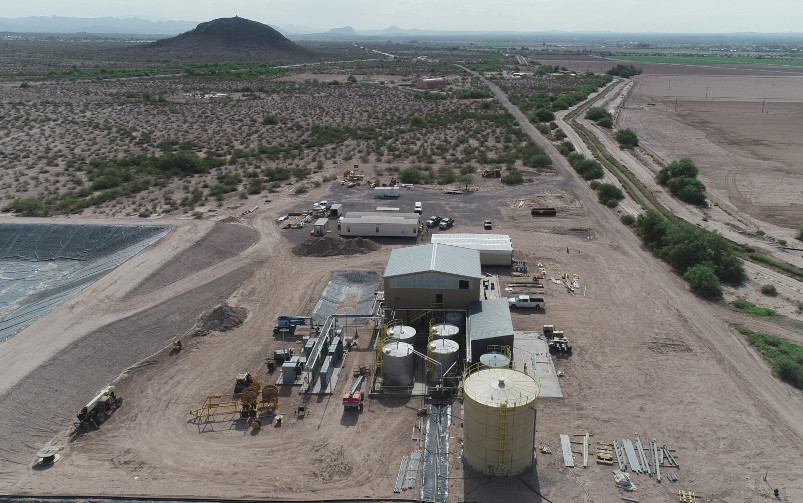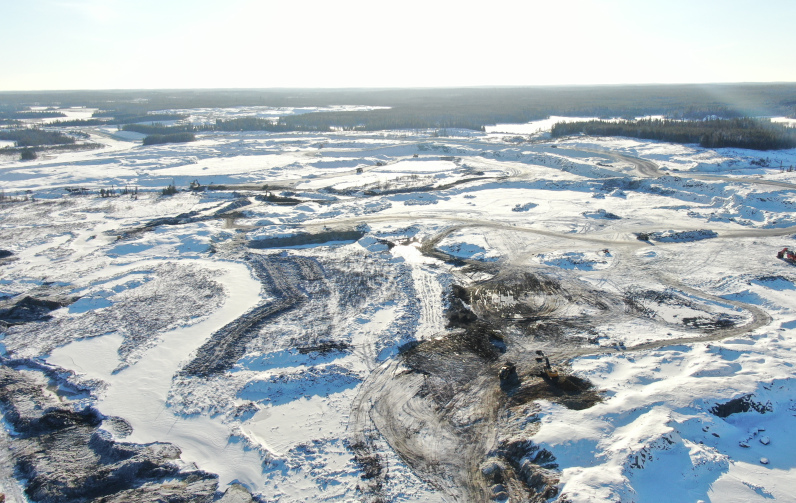The Key Lake mill (pictured) and the McArthur River mine will be restarting operations at 40 per cent below its production capacity. Courtesy of Cameco.
On Feb. 9, Cameco announced its plan to lift the suspension on uranium production at its Key Lake mill and McArthur mine after years of care and maintenance.
In January of 2018, Cameco suspended production at McArthur River and Key Lake. According to a press release, following the Fukushima accident in March 2011, uranium prices fell more than 70 per cent and remained at unsustainably low levels.
At the time, Tim Gitzel, Cameco’s president and CEO, explained that with the continued state of oversupply in the uranium market and no expectation of change on the immediate horizon, continuing operations did not make economic sense. The suspension also resulted in the loss of 550 jobs as just over 200 employees were needed to maintain the facilities during the shutdown.
The World Nuclear Association predicted that the demand for uranium will increase over the next few decades, due to the increasing need for low-carbon energy to fight climate change. Meanwhile, the primary supply is expected to decline, raising prices. Reached for comment, Gitzel said, “the improvement in the uranium market we have seen in recent months has firmed up, and we believe it is sustainable.”
However, Cameco will not be returning to full production. In its fourth-quarter financial report, Gitzel stated, “Our plan in no way represents an end to our supply discipline. What we are contemplating still represents a much greater reduction than any other producer has made. In fact, we are continuing with indefinite supply discipline.”
Related: The K3 headframe at The Mosaic Company’s Esterhazy operations rises high above the Saskatchewan prairie and marks a turning point for the mining complex, as it begins to free itself from the decades-long struggle against water inflow
The Saskatchewan-based company said that by 2024, McArthur River and Key Lake will operate 40 per cent below their operation capacity, resulting in annual production of 15 million pounds per year. By that time, Cigar Lake will also reduce production to 13.5 million pounds per year, 25 per cent below its licensed capacity. The company will also keep its tier-two assets on care and maintenance for now.
In 2021, Cameco operated at about 75 per cent below production capacity, resulting in significant costs to its businesses. By 2024, the company intends to operate 40 per cent below capacity until it sees further improvements in the uranium market.
Cameco has not announced an official start date for the restart. The COVID-19 pandemic and global supply chain issues have created several risks in production. Instead, Cameco is working on returning McArthur River and Key Lake to production standard and, in 2022, the company hopes to produce up to 5 million pounds of uranium.
“This announcement means we will be producing again at these operations, we will be employing people, we will be hiring northern contractors, we will be paying taxes and royalties – it’s just good all around,” said Gitzel.
Orano Canada Inc., which owns 30.2 per cent of McArthur River, 16.7 per cent of Key Lake and 37.1 per cent in Cigar Lake, also welcomed the announcement.
“We are looking forward to this planned restart with a sense of enthusiasm,” stated Nicolas Maes, CEO of Orano Mining. “Given the continued unbalanced uranium market conditions, the restart of McArthur gives us the opportunity to reduce production at Cigar Lake, extending the life of this asset and postponing the need for new projects in northern Saskatchewan.”




